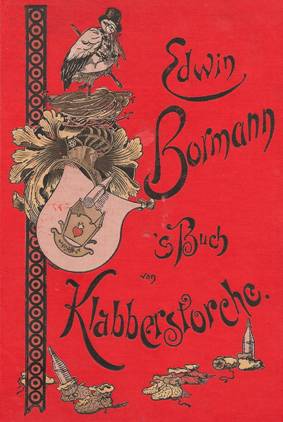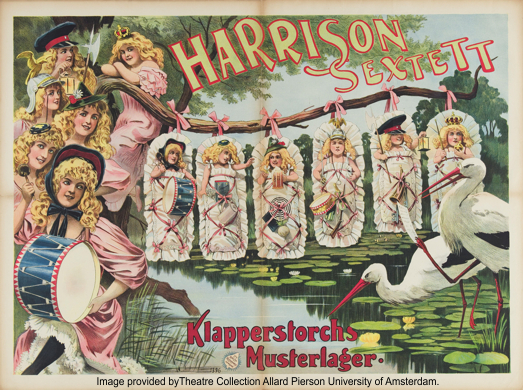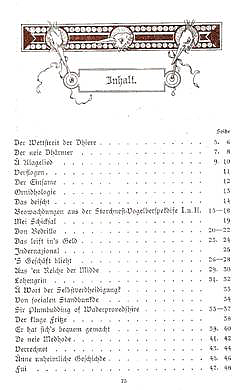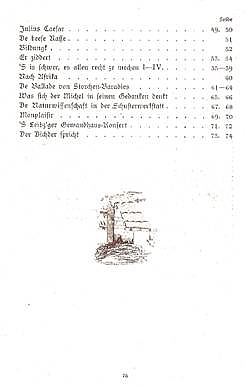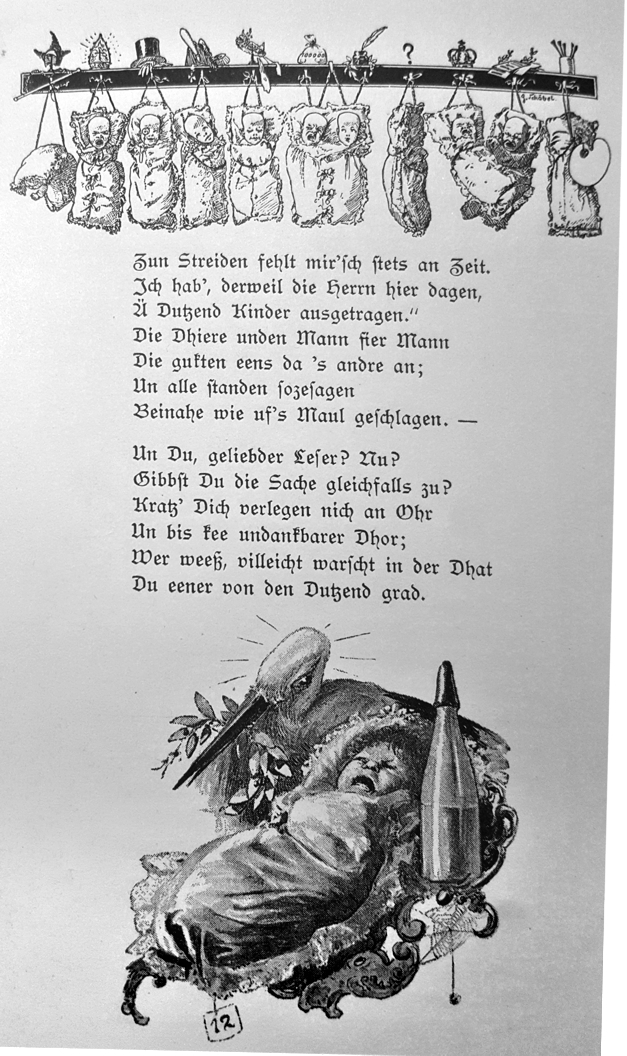|
Stein Collectors International |
 This article is a
"two-fer": two articles which are so closely related that they have
been combined into one. The first part, titled "The Babies Stein,"
examines a stein made by the firm of Reinhold Hanke ca. 1900. In Part
II we learn about "The
Story Behind the Babies Stein." The inspiration
for the Baby Stein was provided by Georg Schöbel's
oil painting (below) which is signed and dated (18)98 in the lower
right
corner. The painting was sold by Bonham's of London in 2010 for £2,400
(approximately $3,879). Click the image to enlarge.
This article is a
"two-fer": two articles which are so closely related that they have
been combined into one. The first part, titled "The Babies Stein,"
examines a stein made by the firm of Reinhold Hanke ca. 1900. In Part
II we learn about "The
Story Behind the Babies Stein." The inspiration
for the Baby Stein was provided by Georg Schöbel's
oil painting (below) which is signed and dated (18)98 in the lower
right
corner. The painting was sold by Bonham's of London in 2010 for £2,400
(approximately $3,879). Click the image to enlarge.

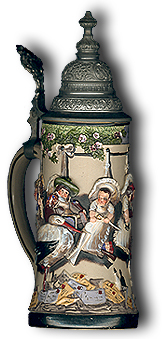 The folklore and
culture of
many
countries refer to the stork as delivering babies to expectant mothers
and
fathers, but where did this story come from?
The folklore and
culture of
many
countries refer to the stork as delivering babies to expectant mothers
and
fathers, but where did this story come from? 
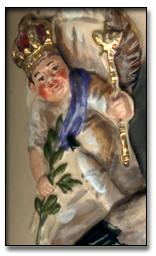
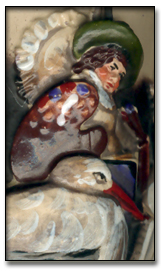
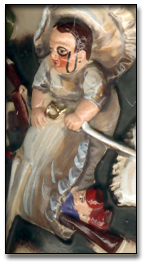
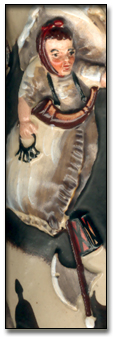
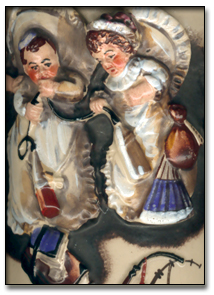
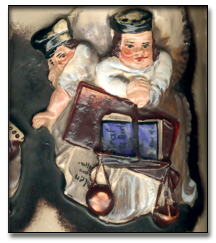
 Not
only is
there a story behind this stein, there are actually 36
stories, most likely written as poems, in a book authored by Edwin
Bormann. The title of the book is "'S Buch von Klabberstorche." Edwin
Bormann was born in Leipzig in 1851 and died there in 1912. He was a
learned man with a wide range of interests. He was a poet, composer and
author. His book’s ranged from children’s books to works on Bacon
writing Shakespeare’s plays. Being from Leipzig, his book was written
in the Saxonian dialect. This then accounts for the spelling difference
between the main title on the book and that on the stein. My copy of
the book does not show a publication date, but it is circa 1900, some
sources cite earlier dates in the 1890s.
Unfortunately, I was unable to locate an English translation of the
book. The illustrations look intriguing and two of the stories are
about Lohengrin and Julius Caesar. The book must have been quite
popular in its day. In the late 1890s an all-female vaudeville act
known as
the Harrison Sextet incorporated the babies into their promotional
materials. I found a Harrison Sextett postcard stamped 1899 that
included a picture of Jean Priver, Impresario, their promoter. This led
me to a listing in an 1895 Theater Almanac of vaudeville acts,
including Priver as promoting The Six Sisters Harrison, thus disproving
my initial assumption that they were a circus act due to where I had
found their poster.
Not
only is
there a story behind this stein, there are actually 36
stories, most likely written as poems, in a book authored by Edwin
Bormann. The title of the book is "'S Buch von Klabberstorche." Edwin
Bormann was born in Leipzig in 1851 and died there in 1912. He was a
learned man with a wide range of interests. He was a poet, composer and
author. His book’s ranged from children’s books to works on Bacon
writing Shakespeare’s plays. Being from Leipzig, his book was written
in the Saxonian dialect. This then accounts for the spelling difference
between the main title on the book and that on the stein. My copy of
the book does not show a publication date, but it is circa 1900, some
sources cite earlier dates in the 1890s.
Unfortunately, I was unable to locate an English translation of the
book. The illustrations look intriguing and two of the stories are
about Lohengrin and Julius Caesar. The book must have been quite
popular in its day. In the late 1890s an all-female vaudeville act
known as
the Harrison Sextet incorporated the babies into their promotional
materials. I found a Harrison Sextett postcard stamped 1899 that
included a picture of Jean Priver, Impresario, their promoter. This led
me to a listing in an 1895 Theater Almanac of vaudeville acts,
including Priver as promoting The Six Sisters Harrison, thus disproving
my initial assumption that they were a circus act due to where I had
found their poster.